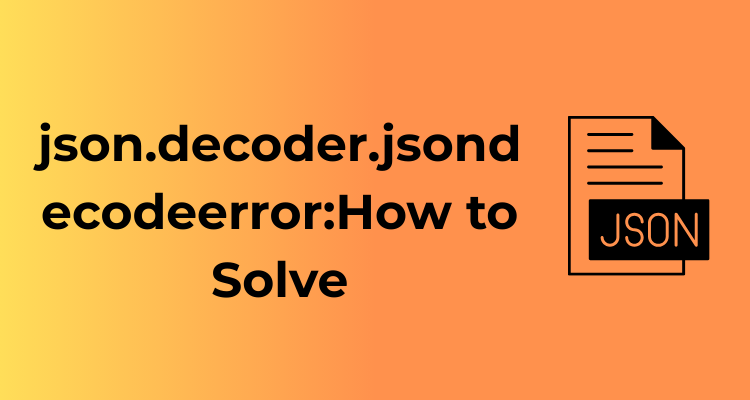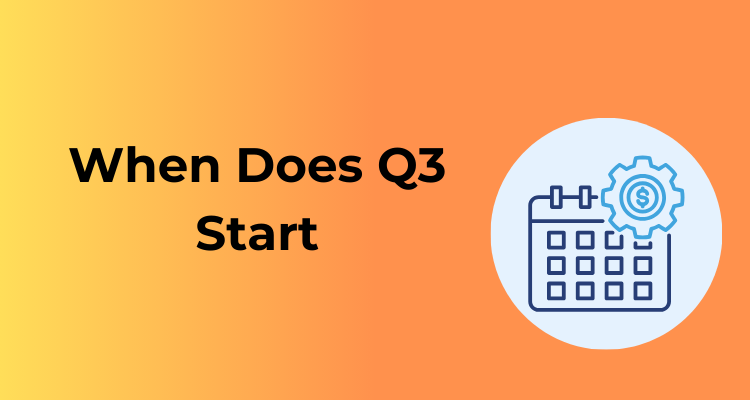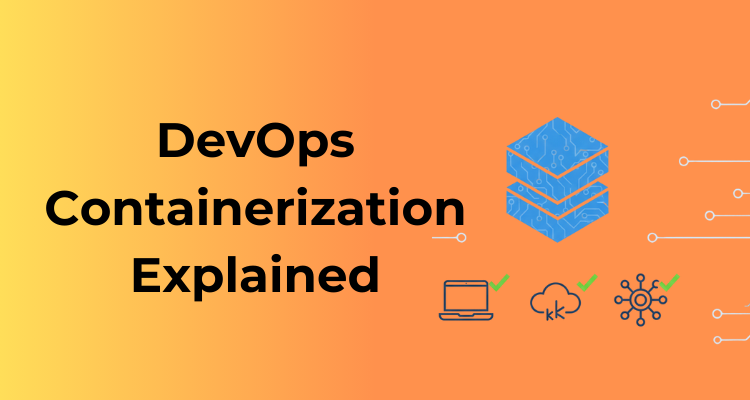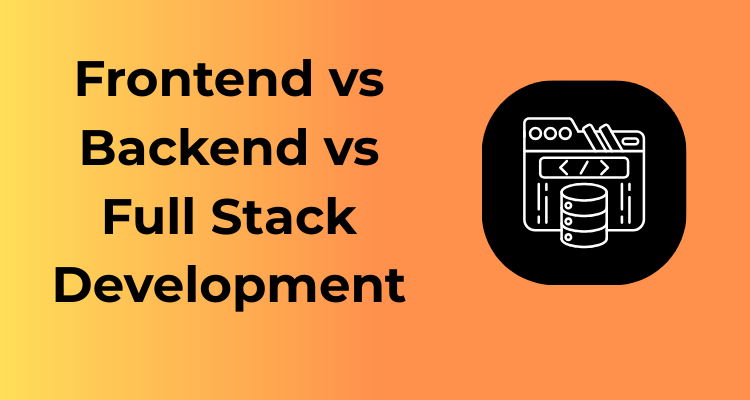Picture this: you’re working on an exciting project, integrating APIs or loading a local JSON file, and with a sense of anticipation, you run your code. But wait—what’s this sneaky error staring back at you?
JSON.decoder.JSONDecodeError: Expecting value: line 1 column 1 (char 0)
It’s the dreaded JSONDecodeError, a not-so-friendly nudge to let you know something went wonky while decoding JSON. Let’s demystify what’s really happening here, so you can spend less time pulling your hair out and more time writing awesome code.
What Does JSONDecodeError Actually Mean?
Think of JSONDecodeError as JSON’s way of shouting, “I can’t make heads or tails of this content!” Essentially, this error crops up when Python’s json.loads() or json.load() encounters something it cannot interpret as valid JSON.
Specifically, the “line 1, column 1” clue usually points to the fact that the very first byte or character of what you’re trying to decode is invalid. The issue often boils down to either:
- An empty response or file. (Yes, JSON needs something to work with!)
- Incorrect or unexpected data. Maybe it’s plain text, HTML, or something else entirely, masquerading as JSON.
- Unescaped characters, syntax errors, or improper formatting in the provided JSON.
What makes this error particularly tricky is its vagueness. “Line 1, Column 1” doesn’t immediately tell you the “what” or “why.” But don’t worry—we’ll connect the dots.
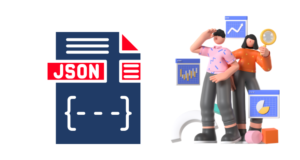
What’s Happening Under the Hood?
Let’s geek out for a moment: Python uses its built-in json module to encode and decode JSON data. When you pass an input to json.loads(), Python attempts to parse it into a data structure (like a dictionary or list).
If the input is empty, malformed, or contains non-JSON-compliant content, Python throws the JSONDecodeError as it realizes it’s wasting its time. Most often, “line 1, column 1” means the issue is right at the start—it failed to find the opening “{” or “[” that should kick off your JSON.
Common Scenarios Triggering the Line 1 Column 1 Issue
Ah, the infamous “Line 1, Column 1” error—it’s like the cryptic fortune cookie of programming errors. If you’ve stumbled upon this error, you’re not alone, and it’s nothing some logical detective work can’t iron out. Let’s dive headfirst into some of the most common reasons why this annoying hiccup rears its unfriendly head (pun intended, JSON headers).
1. The File You’re Parsing Isn’t Actually JSON
It sounds silly, right? But you’d be surprised how often this happens. You think you’re feeding your code a beautiful JSON file, but it’s actually an empty file, a plain text document, or worse… HTML! Your parser expects JSON, and when it’s handed something completely alien, it panics and throws that dreaded “Line 1, Column 1” error.
Pro tip: Double-check the contents of the file you’re providing. Get into the habit of opening it up and glancing at the structure before plugging it into your program.
2. Empty Strings Are Quiet Culprits
Whether you’re pulling data from an API, reading from a file, or accepting input from a user, an empty string is one of the most common reasons for this error. Since JSON decoding expects valid data to chew on, an empty string leaves it with nothing to process. Hence the tantrum at—you guessed it—Line 1, Column 1.
Quick fix: Always check if the input string is empty before passing it for decoding. A simple `if` condition or `None` check can save hours of troubleshooting.
3. Non-JSON Content in the Input
Imagine this: you’re expecting JSON from a remote server, but something goes awry, and the server responds with HTML, an error message, or plain gibberish. Oops! Since this content isn’t JSON, the parser simply can’t make sense of it. Blame this on unexpected or mishandled API responses.
Good practice: Log your API responses before decoding them. That way, if something looks fishy, you’ll catch it before your parser does.
- Example API mishap: Trying to decode a “404 Not Found” HTML message instead of JSON.
4. Encoding Issues
Ever introduced strange Unicode characters or been on the receiving end of a data encoding mismatch? Characters like BOM (Byte Order Mark) or improper UTF-8 can trigger problems. JSON parsers demand strict conformity, and any deviation—no matter how tiny—feels like an insult to their sensibilities.
Troubleshooting suggestion: Ensure your input strings are encoded properly. Tools like `str.encode(‘utf-8’)` in Python can prevent encoding pitfalls.
5. Leading/Trailing Junk Characters
A careless extra comma, a stray bracket, or whitespace where it isn’t welcome—these little nuisances can mess up the entire data interpretation. Parsers are meticulous little helpers with no tolerance for sloppiness!
Solution: Before decoding, use a JSON lint tool or a quick script to clean up junk characters. A simple `strip()` can do wonders for removing pesky whitespace issues.
6. Network Timeouts or Corrupt Downloads
If you’re pulling JSON from a remote source and the download is interrupted, the incomplete data might lead to this error, especially if you’re dealing with truncated or malformed JSON responses.
Pro move: Improve error handling in your scripts to catch timeouts and validate downloaded data before parsing.
7. Misconfigured API Usage
Sometimes, you’ll request JSON from an API, but the headers in your request aren’t configured properly—for instance, forgetting to set `Content-Type: application/json`. The server might respond in an unanticipated format, leaving your parser scratching its head.
Friendly reminder: Always review API documentation for header requirements and test your requests thoroughly before deploying.
Understanding JSON Inputs: What Went Wrong?
Imagine you’re all set to parse some JSON data in your code, eagerly waiting to see your information neatly organized into dictionaries or lists. But just like an unexpected plot twist in a TV show, you hit the infamous “JSON.decoder.JSONDecodeError,” with the finger specifically pointing to “Line 1, Column 1.” What? Line 1? But what’s there to even go wrong on the very first line? Let’s walk through this mystery and uncover the common culprits behind this mishap.
The Good, the Bad, and the Invalid JSON Format
First things first, JSON (short for JavaScript Object Notation) requires adherence to strict syntactic rules. Just like showing up on time for an appointment, JSON files need to be properly formatted to be understood. Sometimes, the error is as simple as feeding your application non-JSON data. For instance:
- Instead of JSON, you might have accidentally inputted plain text, HTML, or even an empty file. Yes, an empty string is technically not JSON!
- Maybe the file starts with invalid characters (e.g., blank spaces or unexpected symbols) – JSON parsers refuse to even read such files.
If your input is structured incorrectly (e.g., missing quotes around keys, leaving out commas, or using single quotes instead of double quotes), you’re bound to see errors. JSON doesn’t like guessing games!
API Responses: The Silent Traps
Another sneaky culprit is APIs returning unexpected data. Let’s say you’re grabbing data from a remote server expecting JSON, but the API returns an error, a plain text response (like “404 Not Found”), or even a sneaky “Internal Server Error” HTML page. Guess what? That isn’t JSON! If you try to decode it as JSON, you’re guaranteed to hit the dreaded Line 1, Column 1 error.
Encoding and Decoding Mix-Ups
If the data you’re working with isn’t encoded or decoded properly, JSON errors are inevitable. For example:
- You might be dealing with a file saved in the wrong encoding format (not UTF-8). A JSON parser might get utterly confused by characters it can’t understand.
- The payload you’re processing might have unexpected whitespace or special escape sequences that throw off the parsing mechanism.
Who Left the Empty Data There?
Believe it or not, passing None or an empty string (“”) to a JSON decoder is a common mistake. Your code might unintentionally send a null input into the parser when the intended data didn’t load properly. Spoiler alert: JSON parsers can’t parse absolutely nothing.
Simple Debugging Steps to Follow Straight Away
Oh, the dreaded JSONDecodeError at Line 1, Column 1! If you’ve encountered this pang of frustration, you’re not alone. First things first—don’t panic. Take a deep breath as we walk through some simple and effective debugging steps you can try right away. Trust me, you’ll feel more empowered once you’ve worked through these!
1. Double-Check the Input Source
One of the most common culprits behind this error is the input source itself! Here are a couple of things to check:
- Empty Input: Is the input completely missing or empty? Your code might be trying to decode an empty string. If your source, like a file or API response, has no content, you’ll want to handle that gracefully.
- Headers and Content Mismatch: If pulling from an API, confirm the response is actually JSON. Sometimes a response could be HTML, plain text, or even an error message disguised as JSON.
2. Verify JSON Formatting
JSON needs to be formatted correctly for the json.loads() function to understand it. Paste your JSON into an online validator (like JSONLint) to confirm whether it’s valid. Here are some common issues to watch for:
- Missing or extra commas.
- Improperly quoted keys or string values—JSON uses double quotes, not single quotes!
- Trailing commas after the final key-value pair in objects or arrays.
A quick check often reveals sneaky formatting errors you didn’t expect.
3. Print and Observe
Yes, the humble print() statement can be your savior. Right before calling json.loads(), consider printing the input you’re attempting to decode. This helps ensure that what you’re feeding into the function is what you think it is.
“Debugging is like being the detective in a crime movie where you’re also the murderer.” — Filipe Fortes
So, keep your detective hat on and observe carefully.
4. Handle Exceptions Gracefully
While debugging, you can wrap your json.loads() call in a try-except block and catch the JSONDecodeError. Print the error and the problematic input for deeper insights. Here’s a basic example:
import json
try:
data = json.loads(your_input_string)
except json.JSONDecodeError as e:
print(f"Error: {e}")
print(f"Input causing the error: {your_input_string}")
This small adjustment often sheds critical light on the source of the issue.
Avoiding Issues by Validating JSON Data First
Oh, JSON. It’s simultaneously brilliant and… unforgiving. If you’ve ever gotten that pesky JSON.decoder.JSONDecodeError, you know exactly what we’re talking about. Let’s cut to the chase: the best way to avoid ending up in JSON error land is to validate your JSON data before trying to load or parse it. It’s like giving your JSON a quick once-over to make sure it’s dressed for the party (or, you know, formatted properly).
Why Validate JSON?
Imagine you’re cooking a dish and have all your ingredients lined up. Would you just throw them all into the pot without checking if you’re missing salt, sugar, or (gasp!) the main ingredient? Of course not. Similarly, validating JSON ensures you’re not about to hand your code a garbled mess and set it up for failure. By validating data, you dodge common pitfalls like extra commas, incorrect nesting, or inadvertently trying to process HTML or plaintext as JSON—yikes!
How to Validate JSON Like a Pro
Okay, so how do you actually go about verifying your JSON in the first place? Relax, it’s simpler than you might think! Here are a few steps you can follow:
- Use Online JSON Validators: Websites like JSONLint or FreeFormatter are perfect for the “quick check.” Paste your JSON, hit validate, and boom—errors, if any, will appear right there.
- Use Python’s Built-In Libraries: Writing code? Python’s
jsonmodule allows you to usejson.loads()to both parse and validate your JSON. A quick try-except block can confirm if your JSON is ready for some coding fun. - Check the Source: Sometimes, JSON can be malformed because the service or API supplying it is having a bad day. Check the source of your JSON, and ensure you’re not getting an HTML error page or XML by mistake.
- Format It for Readability: A good old beautifier tool or editor plugin can help you visually scan your JSON structure for glaring issues. Trust us, your eyes might just catch something!
Real-Life Examples of the Error and Their Solutions
Hey there, let’s get hands-on! It’s all well and good to talk about JSON errors in theory, but what about actual scenarios? Everyone loves a good story, and today, it’s about you combating the infamous JSON.decoder.JSONDecodeError. I’ll walk you through some real-life examples (no made-up drama here!) and, of course, how to tackle them like a pro.
1. The Mysterious Blank Response
Picture this: You’re bravely calling an API expecting a glorious JSON response, but instead, you get a cryptic JSONDecodeError: Expecting value: line 1 column 1 (char 0). What gives? Well, guess what, the API returned nothing—completely empty.
Solution:
- First, double-check the API endpoint you’re hitting. Could it be a typo or a missing query parameter?
- Use a tool like Postman or
curlto manually verify what the response looks like. - Add a defensive line of code to check for an empty response before feeding it to the
json.loads()function:
if not response.text.strip():
raise ValueError("Empty response received from the API.")2. The Tricky Non-JSON Formats
Here’s a fun one: Let’s say you’re working with an external library, and you expect it to return proper JSON. Instead, bam! You’re hit with an HTML error page because the API is down, or maybe a plain text response instead of JSON. This is what causes line 1 column 1 issues to rear their head.
Solution:
- Inspect the response type first—
response.headers['Content-Type']can be your new best friend. - If the response isn’t JSON, log it out for debugging. Trust me, knowing what you’re dealing with is half the battle won.
- Handle edge cases by wrapping your
json.loads()call in atry-exceptblock. Something like this:
try:
data = json.loads(response.text)
except json.JSONDecodeError:
print("Received non-JSON response:", response.text)3. Trailing Commas Sneaking Into Your JSON
JSON format can be strict, and even a sneaky trailing comma can make it invalid. Imagine your JSON payload looks like this:
{
"name": "John",
"age": 30,
}That trailing comma after 30? Yep, it’s a deal-breaker.
Solution:
- Use an online JSON validator or linter (try JSONLint) to pinpoint syntax issues quickly.
- In Python, double-check your JSON generation logic—especially if it involves concatenating strings. Libraries like
json.dumpare your friends for ensuring well-formed JSON.
4. Encodings Gone Wild
So, let’s say you open a file on your computer and pass its contents to json.load(). Out of nowhere, you get a JSONDecodeError. What’s up? Sometimes it’s as simple as a file encoding issue—files saved in formats like UTF-16 rather than good ol’ UTF-8 can wreak havoc.
Solution:
- When opening files in Python, always specify the encoding:
with open("data.json", "r", encoding="utf-8") as f:
data = json.load(f)- If you’re working across systems, add a step to normalize file encodings beforehand.
Best Practices to Prevent JSONDecodeError in the Future
Ah, the dreaded JSONDecodeError! We’ve all been there—scratching our heads, wondering why that harmless JSON input is being so stubborn. But the good news? You’re not destined to live in this cycle of frustration. Let’s roll up our sleeves and talk about some best practices to ensure this error becomes a thing of the past.
1. Always Validate Your JSON Before Using

It’s like checking your tires before a long road trip—validation can save you from bigger problems down the road. Before feeding any JSON into your code, make sure it’s a valid JSON string. There are fantastic JSON validation tools online that can point out missing commas or invalid brackets. Trust me, it’s worth taking the extra minute to double-check!
2. Handle Empty or Null Inputs Gracefully
Sometimes, the input isn’t even JSON—it’s empty. Before parsing, ensure you’re not dealing with an empty string or a null value. An easy fix is to check if the input exists and whether its length is greater than zero:
if input_data and len(input_data.strip()) > 0:
json.loads(input_data)
else:
raise ValueError("Input data is empty!")By adding this simple check, you prevent a whole class of avoidable errors.
3. Watch Out for Encoding and Decoding Issues
When working with JSON data, you might encounter troubles with character encoding. If your data includes non-ASCII characters, ensure proper encoding standards are maintained. Most modern JSON libraries handle this for you, but if you’re unsure, explicitly set the encoding to UTF-8.
Quick tip: When writing JSON to a file or reading it, always use the ensure_ascii=False parameter in Python or the equivalent in your language of choice.
4. Set Up Robust Error Handling
Nobody likes a program that crashes unceremoniously. Use try-except blocks to gracefully catch and handle errors. For example:
try:
parsed_data = json.loads(input_data)
except json.JSONDecodeError as e:
print(f"Oops, invalid JSON! Details: {e}")Bonus points for logging error messages to track patterns over time!
5. Avoid Copy-Pasting Data… Seriously!
It’s tempting to copy-paste JSON data from emails, websites, or shared chats—but those invisible characters (like extra whitespace or line breaks) can wreak havoc. Always sanitize your inputs. A quick call to .strip() for strings can work wonders.
6. Educate Team Members on JSON Best Practices
If you’re part of a team, ensure everyone knows the importance of clean, valid JSON data. Invest time in documentation, code reviews, or even a quick team sync to share common pitfalls and tips.
7. Relentlessly Test Your Data
Testing isn’t just for catching errors—it’s for building confidence in your code. Construct a variety of test cases with valid, invalid, and edge-case JSON inputs to cover all your bases. Automated tests will pay dividends in the long run.
8. Follow the “Less is More” Principle
Say no to overcomplicated data structures. Poorly formatted or overly complex JSON can easily throw your code into a spiral. Stick to clean, minimal, and well-defined structures for your JSON data.
Onward and Upward!
While we can’t promise your JSON troubles will disappear overnight, these tips will arm you with the knowledge and tools to gracefully avoid the JSONDecodeError. Stick to these, and you’ll be parsing data like a pro in no time!

